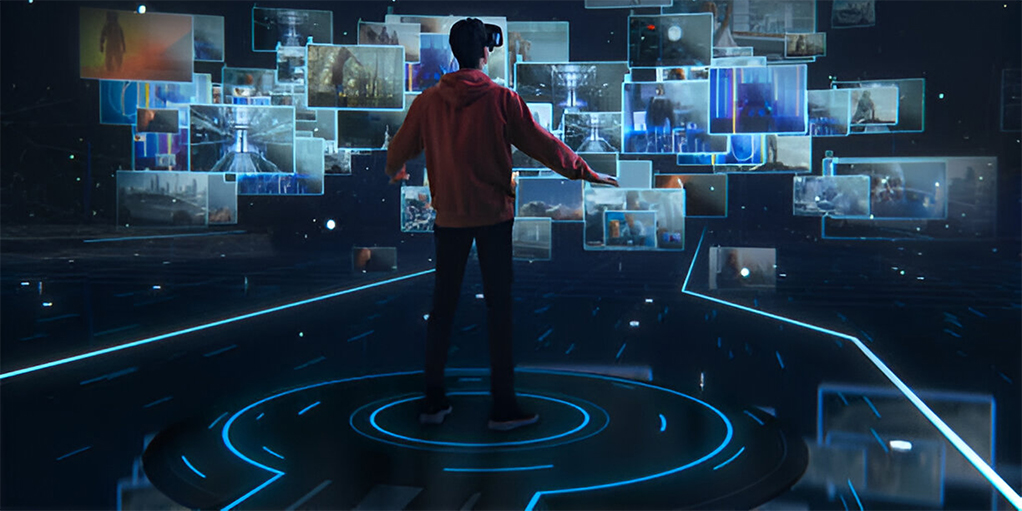Introduction
The landscape of marketing is constantly evolving, with new technologies transforming the way brands engage with their audiences. Among the most promising of these innovations are Augmented Reality (AR) and Virtual Reality (VR). These technologies are paving the way for immersive marketing strategies that offer unparalleled engagement and personalization. In this blog, we’ll explore the future of immersive marketing through AR and VR technologies, highlighting their current applications and potential to revolutionize the industry.
Understanding AR and VR Technologies
- Augmented Reality (AR): enhances the real world by overlaying digital elements such as images, videos, or 3D models onto a user’s view of their environment. This is typically done through smartphones, tablets, or AR glasses.
- Virtual Reality (VR): on the other hand, immerses users in a completely virtual environment, often requiring a VR headset. This technology creates a simulated experience that can range from realistic to fantastical, depending on the application’s purpose.
Current Applications of AR and VR in Marketing
Product Visualization:
- AR Try-Ons: Brands like IKEA and Sephora are using AR to allow customers to visualize furniture in their homes or try makeup virtually. This reduces the uncertainty in online shopping and enhances customer confidence.
- Virtual Showrooms: Car manufacturers like Audi and BMW use VR to create virtual showrooms, allowing customers to explore different car models and customize features without needing a physical showroom visit.
Interactive Advertising:
- AR Ads: These ads come to life when viewed through an AR app. For instance, a static magazine ad can transform into an interactive 3D animation, providing a richer advertising experience.
- Immersive Campaigns: Companies like Coca-Cola and Samsung have launched VR campaigns that transport users to immersive worlds, creating memorable brand interactions.
Enhanced Storytelling:
- Brand Stories: VR can create compelling narratives by immersing users in brand stories. For example, TOMS Shoes uses VR to take users on a journey to see the impact of their purchases on communities in need.
Engagement and Gamification:
- AR Games: Brands can develop AR games to engage users. For example, the Pokémon GO phenomenon demonstrated the massive potential of AR in engaging large audiences through interactive experiences.
- VR Experiences: VR offers deep engagement by allowing users to experience a brand’s world firsthand, such as virtual travel experiences provided by tourism companies.
The Future Potential of AR and VR in Marketing
Personalization and Customization:
- Tailored Experiences: AR and VR can offer highly personalized experiences based on user data. AI integration can analyze user preferences and behaviours to dynamically adjust the content, making interactions more relevant and engaging.
- Custom Products: Users can customize products in real-time using AR, seeing how different options look before making a purchase. This is already popular in the automotive and fashion industries.
Increased Accessibility and Adoption:
- Cost Reduction: As AR and VR technologies become more affordable, they will be accessible to a broader range of businesses and consumers, driving widespread adoption.
- Enhanced Devices: Improvements in AR glasses and VR headsets will make these devices more user-friendly, comfortable, and integrated with everyday life, boosting their use in marketing.
Cross-Industry Applications:
- Healthcare and Education: AR and VR are not limited to retail and entertainment. In healthcare, AR can assist in medical training by overlaying anatomical information onto a patient, while VR can provide immersive learning experiences in education.
- Real Estate and Architecture: VR tours can revolutionize real estate by allowing potential buyers to explore properties remotely. Similarly, architects can use AR to visualize projects in real time, aiding in the design and client presentations.
Enhanced Data Collection and Analytics:
- User Interaction Data: AR and VR can track user interactions in detail, providing valuable data on how customers engage with products and content. This data can be used to refine marketing strategies and improve user experiences.
- Real-Time Feedback: Marketers can receive real-time feedback on how users interact with AR and VR content, enabling rapid adjustments and optimizations.
Challenges and Considerations
While the future of immersive marketing with AR and VR is promising, there are challenges to consider:
- Technical Barriers: Developing high-quality AR and VR experiences requires significant technical expertise and resources.
- User Comfort: VR, in particular, must overcome issues related to user comfort, such as motion sickness and device ergonomics.
- Privacy Concerns: Collecting detailed user interaction data raises privacy concerns that need to be addressed through transparent data practices and robust security measures.
Conclusion
The future of immersive marketing is bright, with AR and VR technologies leading the charge. These technologies offer unprecedented opportunities for creating engaging, personalized, and interactive experiences that can transform how brands connect with their audiences. As AR and VR continue to evolve and become more integrated into everyday life, they will undoubtedly play a central role in the future of marketing. Businesses that embrace these technologies early will be well-positioned to captivate their audiences and stay ahead of the competition in an increasingly digital world.
To know more about Digital Marketing, Please visit https://paypercampaign.com





